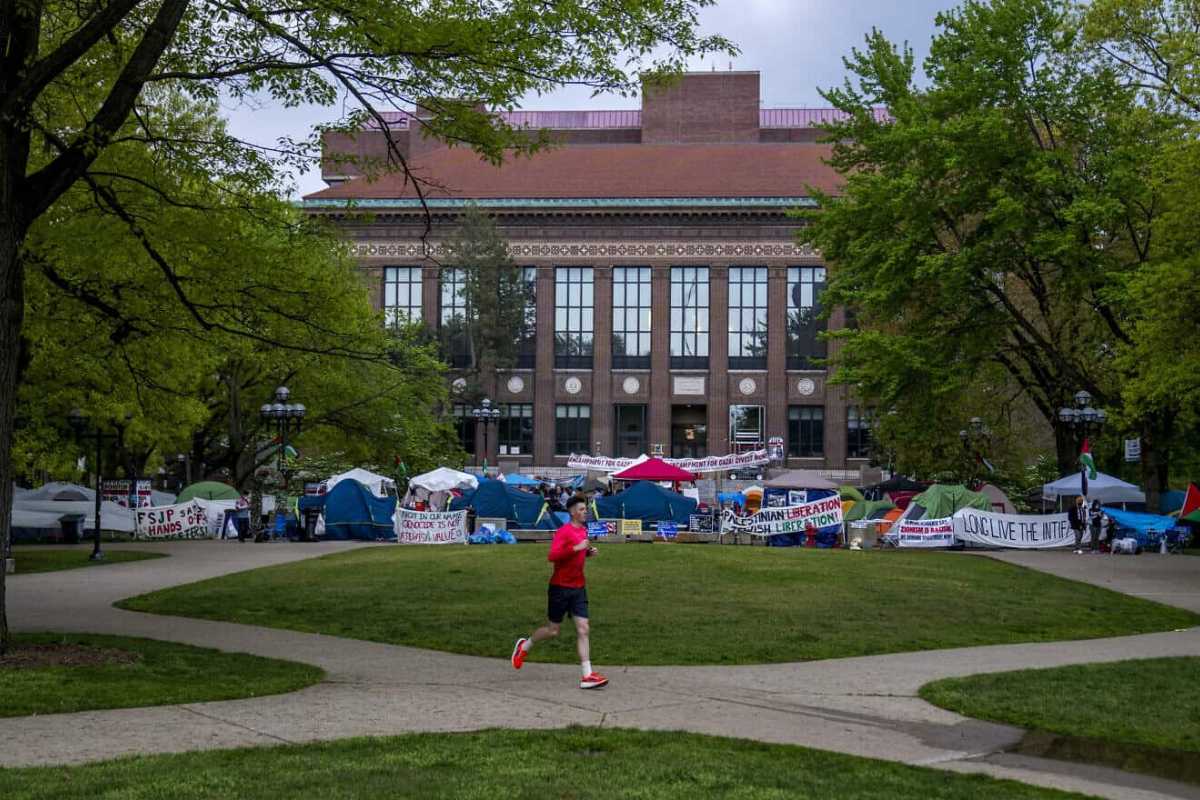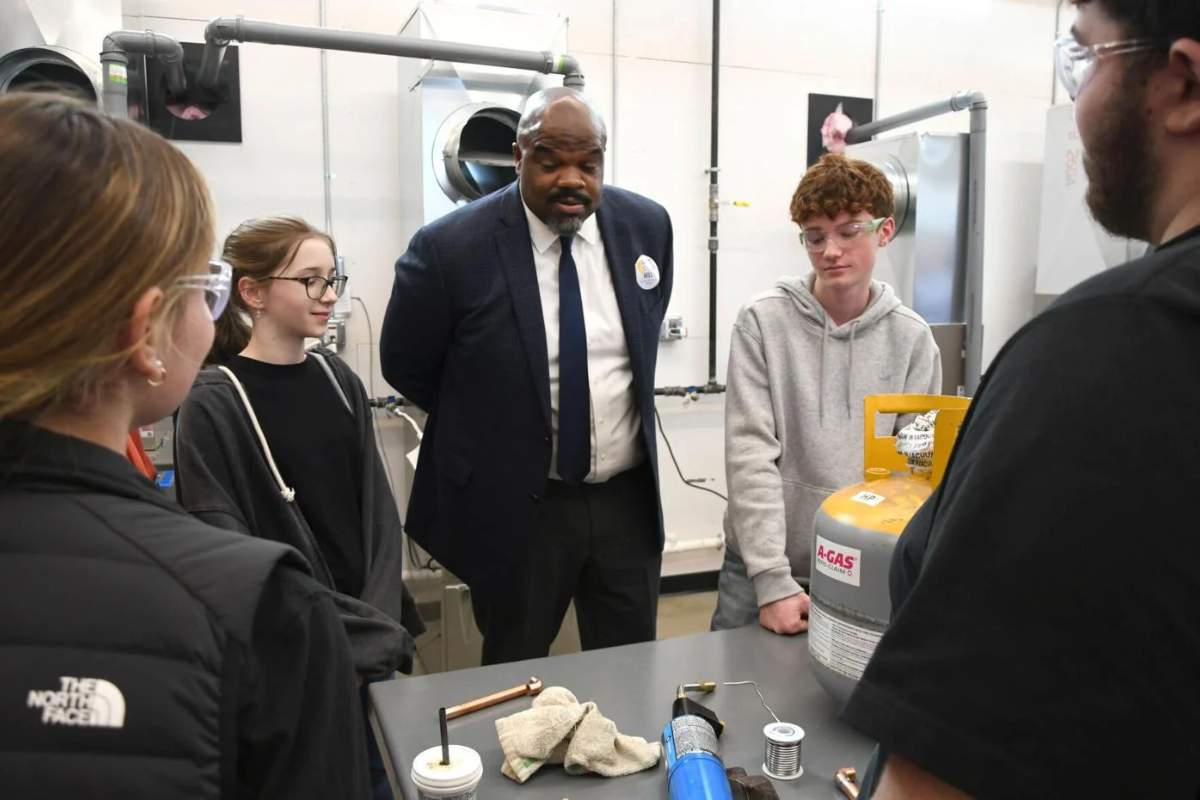The U.S. Department of Education is holding up the Twain Dual Language Academy in the San Antonio Independent School District as an example for bilingual education, praising its wall-to-wall dual language programme and high achievement requirements during a visit on Wednesday.
A school mariachi band welcomed Miguel Cardona, the secretary of education for the United States, as he arrived at the campus early on Wednesday. After addressing the children in Spanish, he explained to the instructors and administrators that the greeting was a symbol of the school’s crucial embracing of culture, which is administered in partnership with UTSA.
“To me, [that] is more than just music,” he declared. It serves as confirmation of their identity.
In a roundtable discussion, school administrators, teachers, and a parent talked about how education has changed recently, moving from bilingual education, which prioritises English proficiency, bilingual education, which emphasises learning subjects and skills in both English and Spanish (or another language).
He remarked, “Students are learning that they matter in addition to studying knowledge. That what they contribute is an asset rather than a deficit.
According to Esmeralda Alday, the executive director of dual language for SAISD, that perspective has transformed the Twain community, which was a failing campus under the previous strategy with kids and parents perceiving their home language as a handicap.
Alday declared that there was no pride. “There was shame because’my language and culture are a handicap.'”
However, the school got an A rating a few years after switching to dual language, and biliteracy began to be seen as an advantage rather than a disadvantage.
The Department of Education’s initiative to “Raise the Bar: Lead the World” includes this “flipping of the script” and a larger focus on multilingualism.
The goal, according to him, is to increase American students’ educational aspirations and successes so that when they graduate in the future, they would be able to compete on a worldwide scale.
Cardona asserted that the next generation won’t have as much of a competitive advantage in an increasingly international marketplace without access to proper education, higher education pathways, and bilingual services.
A first language’s value
Cardona said the Twain multilingual method builds on the talents and prior knowledge pupils already have in their home language rather than letting those abilities wane and giving the same language years later as a high school elective.
Let’s value what they have to offer, he said.
SAISD now has 62 campuses offering dual language courses out of the district’s approximately 100 campuses, a significant increase in the number of dual language programmes over time.
Every classroom at the Irving and Twain dual language academies is bilingual education.
The board president Christina Martinez, who spoke with Cardona on the part a ruling body can play in guiding districts towards dual language models, has been largely responsible for that expansion.
In addition to persistent challenges with a lack of multilingual teachers, Martinez claimed that initially, families in the neighbourhood were unwilling to adopt the dual language model.
“What we were trying to do was convince the community that was the way to go, which was a mind-shift change,” she claimed. “I recall families in this neighbourhood specifically asking why we wanted to teach Spanish when they already knew Spanish,” she said.
She said the emphasis was on teaching parents about the advantages of bilingual education and bicultural education.
These difficulties have recurred when dual language programmes are introduced in more schools, she claimed.
That is also continual parental education, according to David Garca, the principal of Twain for the previous seven years.
To ensure that both our parents and our Spanish speakers and monolingual English speakers properly grasp the goal of the programme and how we go about educating a child in both languages, he stated, “We put on something called Parent University every single year.” After that, people truly understand us, and we receive their entire support and trust.
According to Garca and Alday, placing a priority on cultural literacy has also been crucial in selecting and preparing teachers for the programme.
Students who speak English as their first language attend classes where they are simultaneously learning Spanish in dual-lingual settings.
Alday cautioned that the advantages of being bicultural can be lost if culture is not prioritised.
If that element is missing, she warned, “we might have teachers who are fluent in Spanish and may cater to the English-speaking students with blonde hair and blue eyes.” “Our programme is in very real danger of becoming gentrified.”
A lifelong learning process
As the two toured the hallways of Twain from classroom to classroom, observing children learn and talk in English and Spanish, English Superintendent Jaime Aquino related his tale with Cardona.
As an immigrant from the Dominican Republic, he declared, “This is my passion.”
Cardona talked to the kids in a third-grade maths session before giving them chocolate coins.
The two also paused in a science class where seventh-graders were measuring their own and Cardona’s heartbeats as they studied the significance of various sorts of heartbeats.
The round table was set up in a cheerful library with colourful paper flowers and ceiling titles that students had adorned with images of their favourite book covers.
According to Cardona, the pupils in this school are more prepared than the majority of students nationwide. “Because they are in a setting where their uniqueness is valued and accepted”
Aquino claimed that throughout his lifelong journey, learning English as a second language had both advantages and disadvantages. He claimed that his English word and sound pronunciation held him back until enrolling at SAISD a little more than a year ago.
Despite my achievements, “I’ve lived my life like I’m not good enough to lead an educational system,” he admitted. “This is the first time that I have been accepted to be my true self under this board and under this city.”
Also Read: State Board Of Education Swings A Grand Slam, According To Kalman Hettleman










